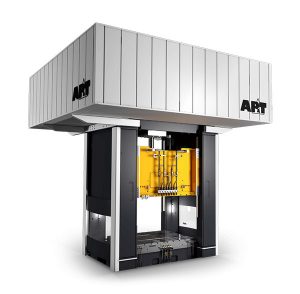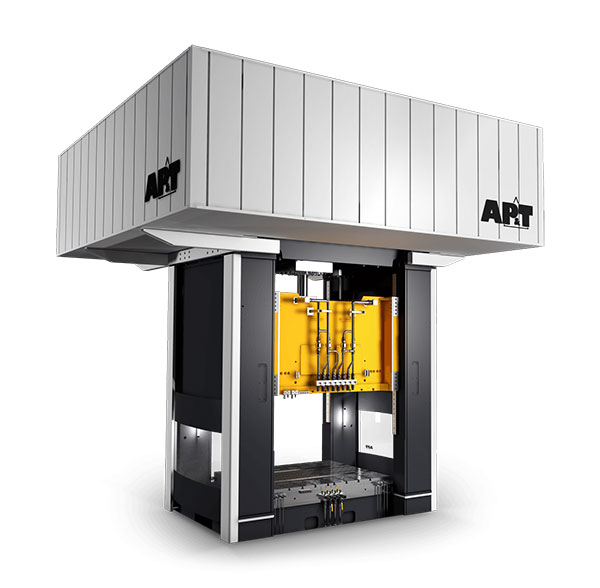With the introduction of its latest servo-hydraulic press, AP&T says it is offering short cycle times, high precision, low energy consumption and minimal need for maintenance in comparison with conventional hydraulic presses and many servo-mechanical presses.

Several technical solutions have helped AP&T’s designers combine high performance with low operating costs. First and foremost, the hydraulic system’s control valves have been replaced by servo motors, which means that speed, position and press force are entirely controlled electrically.
“The design has made it possible to limit the number of moving parts, cut down on oil volume, reduce pressure in the hydraulic system to a maximum of 250 bar and eliminate the effects of any variations in oil temperature,” says AP&T’s product manager for presses Patrik Haglund. “This lays the foundation for a very robust process with a high degree of availability and repeat accuracy, at the same time that the need for maintenance is substantially reduced.”
Energy consumption has also been streamlined by 40-70%, depending on the application. Here, the heat loss generated by pressure valves can be avoided, and some servo motors are used as generators at retardation. The cushion cylinder of the press is also operated by servo motors, which work as generators. Braking energy is distributed to the motors used for acceleration and forming through a kinetic storage system and a central direct current converter. Since the energy is stored internally in the press, it is not necessary to use electricity from the grid during peak loads, which results in a lower connection fee. Stored energy surpluses can also be restored to the grid.
For further information www.aptgroup.com















